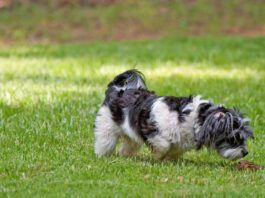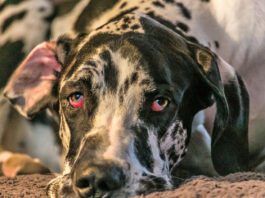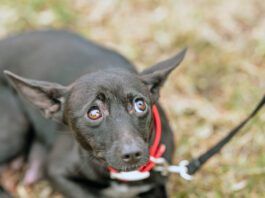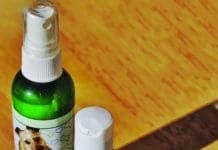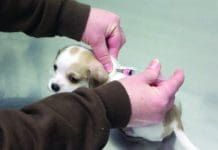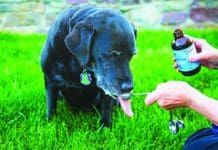Aromatherapy for Your Dog’s Arthritis Treatment
Each essential oil has a chemical category that may have several different effects. Aromatherapy is a modern healing art, and the therapeutic quality of essential oils is still being discovered. In other words, aromatherapy is a complex subject that deserves careful study and expert guidance. There are many ways to deliver essential oils into your dog's environment. Essential oils the volatile substances of aromatic plants are collected, usually by steam distillation, from leaves, blossoms, fruit, stems, roots, bark, or seeds. The water that accompanies an essential oil during distillation is called a hydrosol or flower water. Hydrosols contain trace amounts of essential oil and are themselves therapeutic.
Treating Your Dog’s Hypothyroidism
Hypothyroidism (underactive or low thyroid) is a common disorder in dogs. A variety of breeds are known to be genetically predisposed, including the Labrador Retriever, Golden Retriever, Dachshund, Boxer, Doberman, and Cocker Spaniel. (It's normal for sighthounds such as the Greyhound to have relatively low thyroid levels as a result of their unique physiology; these levels are not a sign of pathology in these breeds.)
Kennel Cough Resources
These products and informational resources on the bordetella virus are meant to help you alleviate your dog's symptoms of kennel cough. For more information on kennel cough from Whole Dog Journal, see Kennel Cough: Treatment, Symptoms, Prevention.
Herbal Remedies for Your Dog’s Arthritis Pain
While its true that some herbs recommended for use with canine arthritis have drug-like actions, including contraindications and potentially adverse side effects, the plants mentioned here are easily acquired from reputable sources, widely used, and safe for most dogs. The descriptions that follow include safety notes as applicable.
Identifying Arthritis in Dogs
There are a number of types of arthritis that affect dogs: osteoarthritis, rheumatoid arthritis, septic or infective arthritis, spinal stenosis, spondylitis and spondylosis. Conventional medicine considers arthritis in dogs and humans a chronic disease that progresses and has no cure but which can be managed with symptom-suppressing drugs and other therapies. Holistic veterinarians manage arthritis in dogs with diet, nutritional supplements, medicinal herbs, and a variety of noninvasive treatments, many of which dog lovers can provide at home.
Puppy Vaccines: Why Your Puppy Needs So Many Shots
Puppy vaccine schedules can be daunting to new dog owners. Why do puppies need so many shots? Are all those puppy vaccinations really necessary? Most veterinarians recommend that puppies are vaccinated for distemper, parvovirus, and adenovirus (hepatitis) a number of times, starting when they are about four to six weeks old, and again every three or four weeks, with their last puppy vaccination" given after they are about 16 to 20 weeks old. "
The Dog is Throwing Up!: Your Guide to Dog Vomiting
When dogs feel nauseated and are about to throw up, they often drool, lick their lips, swallow excessively, and stand head down looking worried. Many dogs look for or turn to their owners when they're about to vomit, which can signal alert caregivers to move their pets to a better location! In time you might be able to train your dog to throw up where it does the least damage.
Retained Testicles Can Be Dangerous for Dogs
How does it happen that testicular descent fails to occur in some cases? As the canine fetus develops, the testicles are formed in the abdomen, near the kidneys. Usually, as the puppy grows initially, in utero, and then, after his birth his testicles are gradually pulled from the abdomen, through the inguinal canal (a passageway through the abdominal wall), and into the scrotum by the gubernaculum, a ligamentous cord connecting the testes to the scrotum.
Reduce Your Dog’s Cancer Risks
Veterinary oncologists say that cancers in humans and in dogs are incredibly similar, in terms of growth and prognosis. That's good news for both species, as research of human or canine cancer may yield insight about and new treatments for this deadly disease. In addition, many of the tactics that reduce the incidence of cancer in humans, veterinary oncologists say, can be used by pet owners to reduce the chances that their dogs will develop the disease. Here are four things you can do to help prevent cancer in your dog.
Your Dog’s Physical Characteristics (And Why They Matter)
if you are aware of them before your dog suffers an injury. For example
Advocate for Your Dog
Willow. She scans for hazards (snakes
Vitamin D for Dogs
Vitamin D deficiencies in dogs can cause health problems over time, but so can an oversupply. Because vitamin D is fat soluble, it accumulates in body fat. Overdoses can be toxic and even fatal, but some vitamin D is necessary to a dog's health. Vitamin D will aid in the absorption of calcium and phosphate, increases bone cell activity, influences the formation and growth of long bones, and speeds the healing of fractures. Adequate D levels may help prevent heart disease, joint inflammation, skin and coat problems, cancer, vision problems, depression, mental illness, infections, inflammatory bowel disease, dental problems, hyperparathyroidism, and kidney disease.



